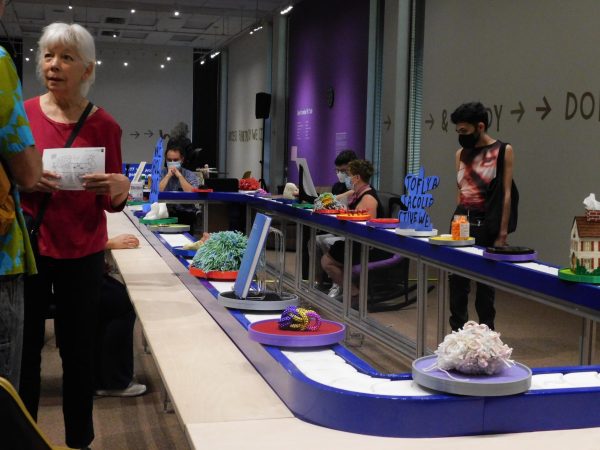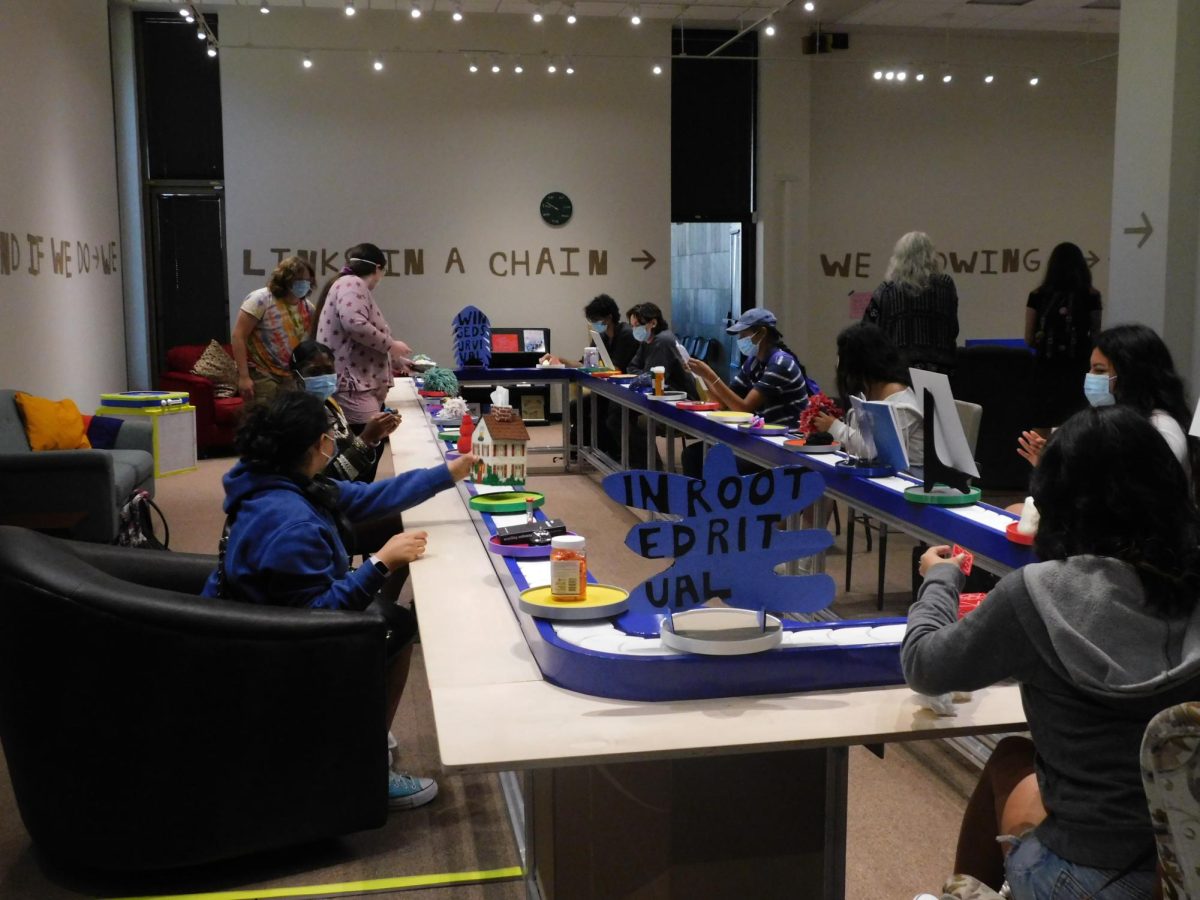‘Don’t mind if I do’ is a collaborative art exhibit centered around transforming how people access and interact with modern art showing in the Sacramento State library gallery from Tuesday, Sept. 10, through Wednesday, Nov. 27, 2024.
The space has been carefully crafted by Finnegan Shannon and curated by Lauren Levy, to encourage people to gather around the conveyor belt, handle the art and celebrate the works of all twelve artists who contributed.
Art graduate student Nicholas McMenamin said he thought that the exhibition was interesting and could create a trend that changes how people interact with artwork.
“I like the idea of finding different ways to do art, and I thought it was a really creative and interesting way to kind of kill two birds with one stone,” McMenamin said. “Making it accessible, and then also changing the way that people are looking at the art and how they experience it.”
Zell Sullivan, a senior art history major, also supported the changes that the artists were creating; they pointed out the problem that modern art has with a lack of inclusiveness and ableism.
“Ableism is rampant; there are so many ways that people don’t consider that they exclude somebody,” Sullivan said. “Having a type of art that doesn’t conform to conventions as we understand them is necessary.”
RELATED: Sac State’s UNiQUE brings the silent beats and heat
Accessibility was a key feature discussed by Shannon and Levy in their artist conversation on Sept. 12. Shannon said their intent was to create art exhibits that were not only comfortable and accessible for themself but to develop ways to share that experience with the largest possible audience.

Shannon spoke about the genesis of the idea when they struggled to find adequate seating in traditional gallery spaces. Shannon had the idea to make the artwork functional as seating.
“It was a way to work around that structure and get some benches into places where there might not be benches otherwise,” Shannon said.
The exhibit evolved over the years into multiple shows with ‘Don’t mind if I do’ as the current derivation of the original idea.
“I don’t want to just carve out space for myself,” Shannon said. “I want to be able to share my work with other disabled friends and colleagues and strangers, because we live in a world where there is so little support for that.”
Shannon shared the idea of access having different ‘flavors’ and feelings depending on the context that it’s provided in, varying from dry or cynical, to sweet and sometimes rooted in rage and anger.
“That’s how I experience most access: the checklist, the ADA compliance, it feels very fear driven,” Shannon said. “It feels very much about doing the minimum effort in order to not get sued.”

Helen Lee, acting associate dean for Budget and Operations in the College of Arts and Letters said that she enjoyed the exhibit but was still hesitant to touch the art.
“It’s interesting, after a lifetime of being trained not to touch,” Lee said. “It’s unnerving to be permitted to touch.”
Lee also commented on the subversion of traditional expectations for art with the choices the artists made in the objects displayed on the conveyor belt.
“I love the inclusion of ordinary objects, that when you take it out of its context, you actually look at it and confront the object in different ways,” Lee said. “So you see and think about it in its entirety, rather than its usefulness or its utility.”
Dean of the College of Arts and Letters Christina Bellon said the exhibit raised questions about how we interact with art and the preconceptions involved in traditional displays.
“There are all these ways in which our experience of art is constructed around expectations of what normal perception, of normal embodiment and normal physicality is in relation to art,” Bellon said.
Bellon said that they hoped to see more art that is focused on inclusion in the future.
“I think the more we make art accessible to people regardless of their ability, regardless of their economic and social status,” Bellon said. “The more that builds and creates a society in which we all would want to live and should want to achieve.”






















































































































